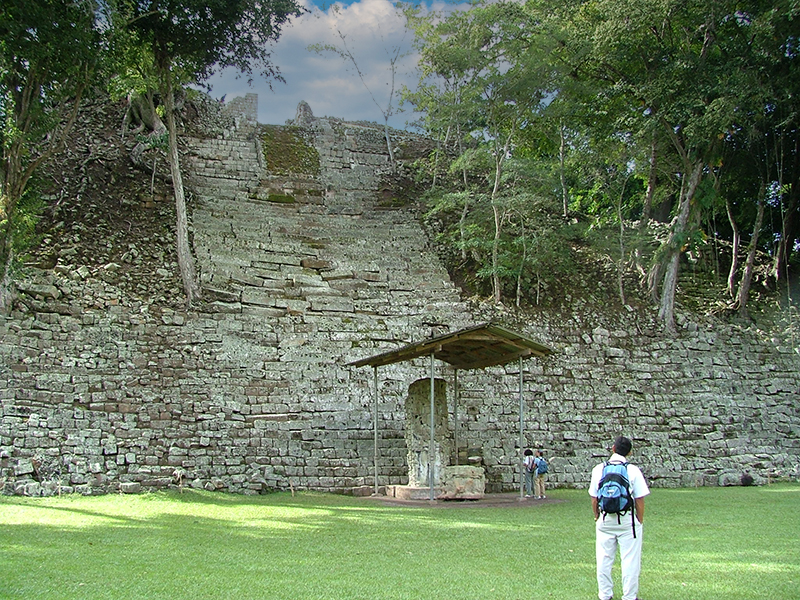

The supporting platform was built in 769 AD, while Temple 11 on top was dedicated in 773
Yax Pasaj, the 16th and last ruler of Copan, commissioned Temple 11 seen here, as well as Altar Q which he placed in front of Temple 16. He also built the Reviewing Stand on the south side of the Temple 11 platform.
Giant Pauahtunob were positioned at each corner of the temple to hold up the "sky register" decorating the temple roof. The head of one of these mythical beings now rests at the eastern base of the temple.
The portrait Stela N, placed in front of Temple 11, was erected by Yax Pasaj's predecessor Smoke Shell, the 15th ruler of Copan.

From the Maudslay Collection, British Museum. Used with permission under the CC BY-NC-SA 4.0 non-commercial license. ©The Trustees of the British Museum.
"Yax-Pac [the 16th and last ruler of Copan] designed the ground floor of this temple with a wide east-west gallery crossed by a smaller north-south corridor. In this way he engineered an entrance to the building from each of the four cardinal directions--north, east, south, and west. Just inside each of these four doors, panels facing one another record historical events important to Yax-Pac's political strategy and the dedication of the temple itself.
What is curious about each pair of texts is that one is in normal reading order, while the other facing text reads in reverse order as if you are seeing a mirror image. It is as if you were standing between the glass entry doors of a bank--the writing on the door in front of you would read normally while the writing behind you would be reversed. If you were standing outside, however, the texts on both doors would read in the proper order.
In Temple 11, of course, the walls are not transparent, but this made no difference, since the audience addressed by these texts consisted of the ancestors and the gods. Apparently, they could read through solid walls.
Furthermore, each pair of texts is designed to be read from a different direction starting with the north door: To read them in proper order (that is, "outside the bank doors") the reader would have to circulate through all four of the directions.
This attention to the "point of view" of the gods is not unusual in Maya art."
Schele and Freidel, A Forest of Kings: The Untold Story of the Ancient Maya, p. 326-7
Herring, Adam. "A Borderland Colloquy: Altar Q, Copán, Honduras." The Art Bulletin, vol. 87, no. 2, 2005, pp. 194–229. JSTOR, http://www.jstor.org/stable/25067169. Accessed 8 Mar. 2023.

Smoke shell set Stela N in front of the steps of Temple 11 in 761 AD, before the supporting platform of Temple 11 was completed.
In addition to Stela N, Smoke Shell also extended Copan's Hieroglyphic Stairway, as well as comissioned Stela M which stands at its base.
Smoke Shell was probably not the father of Yax Pac (or Yax Pasah), the last ruler of Copán and builder of Temple 11 which stands behind this stela. This is because the only reference to Yax Pasah's father is unclear, while his mother, a lady from Palenque, receives greater prominence and was his primary claim to royal descent. Martin & Grube believe this may suggest a break in the male line of succession.
Simon Martin & Nikolai Grube. Chronicle of the Maya Kings and Queens, Second edition. Thames & Hudson, 2008, p. 209.

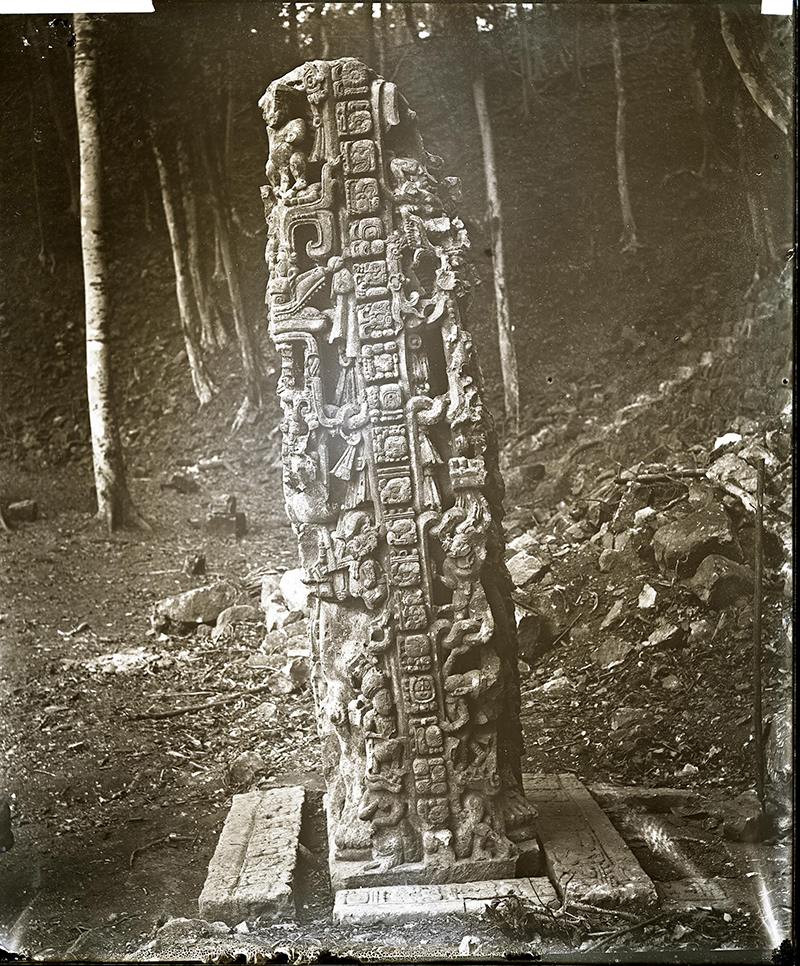
From the Maudslay Collection, British Museum. Used with permission under the CC BY-NC-SA 4.0 non-commercial license. ©The Trustees of the British Museum.
Alfred Maudslay visited the Copan ruins in 1890-1891 & made numerous glass-plate photos which are now archived in the British Museum. This is a photo of the side of Stela N with a backdrop of Temple 11 showing its overgrown condition at that time.
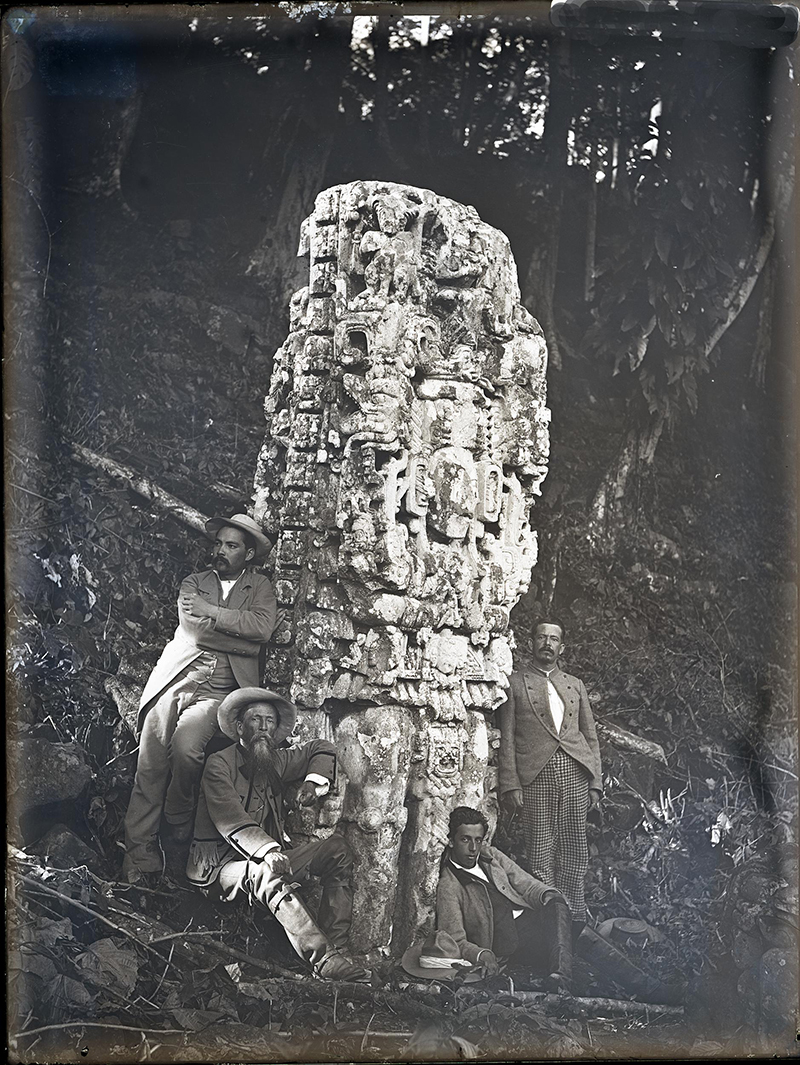
From the Maudslay Collection, British Museum. Used with permission under the CC BY-NC-SA 4.0 non-commercial license. ©The Trustees of the British Museum.
An amusing photo annotated by the British Museum as "Four men standing and sitting on slope next to Stela N; trees in the background" conveys the ambience of the expedition.
It appears that these men are rather overdressed for archaeological work in a tropical environment, so they probably were visiting local dignitaries. Note that most wear appropriate knee-high leather boots, a necessity against snakes.
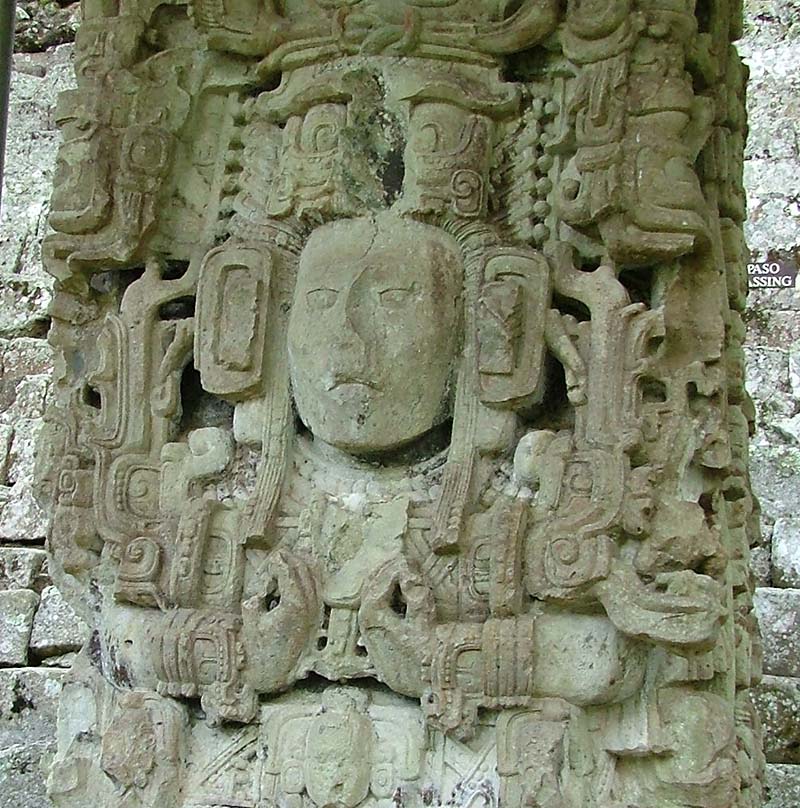
Smoke Shell died about a year after Stela N was installed, and his tomb probably lies somewhere deep inside the pyramid that supports Temple 11.
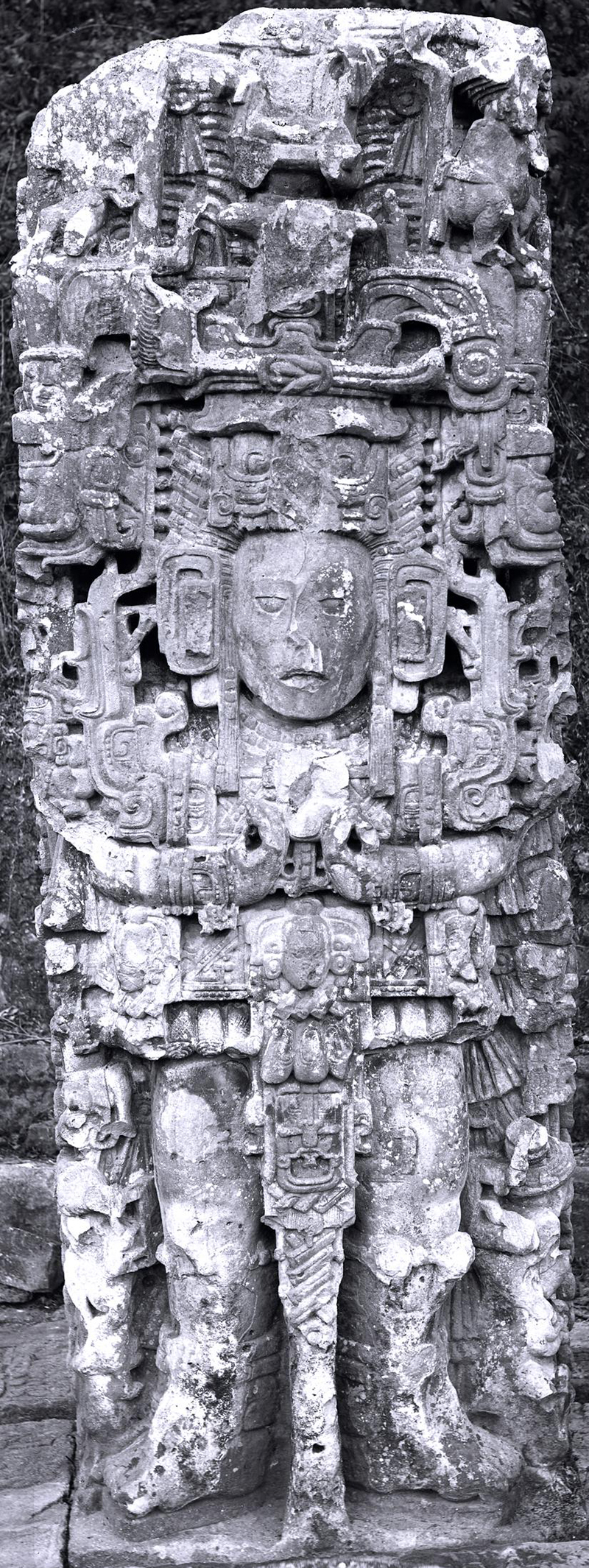
From the Maudslay Collection, British Museum. Used with permission under the CC BY-NC-SA 4.0 non-commercial license. ©The Trustees of the British Museum.
Maudslay's glass negatives are used by epigraphers and archaeologists even today because of their quality and resolution, and because they captured details and inscriptions that have eroded since his time.
There are numerous other photos from Copan and other sites available online in the magnificent British Museum's Maudslay Collection of glass negative plates, plaster casts of monuments, as well as maps and drawings from Maya sites in Central America visited by Maudslay.